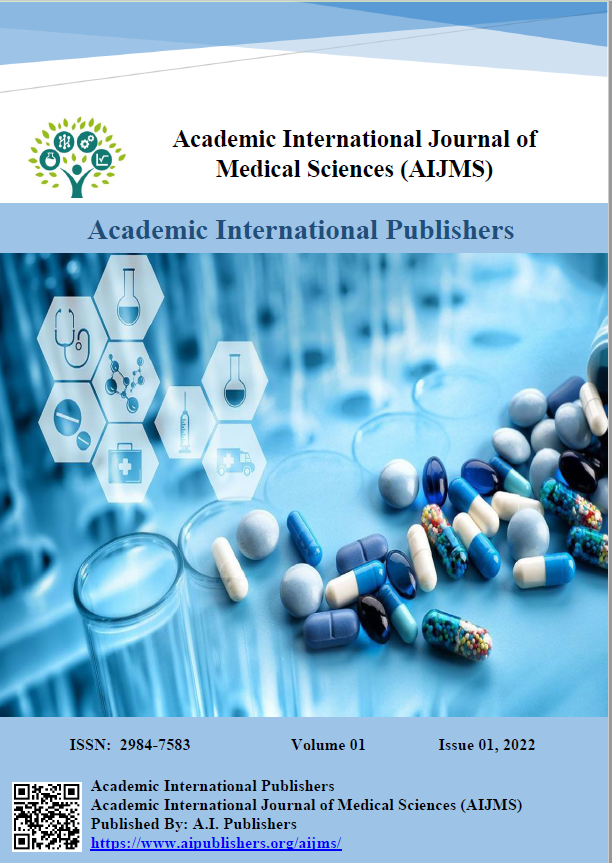Physiology of Aging: Mechanisms, Adaptations, and Interventions
DOI:
https://doi.org/10.59675/M325Keywords:
Classics Aging physiology, hallmarks of aging, geroscience, interventions, biomarkers, cellular senescence, rapamycin, metformin.Abstract
The current research aimed to review in detail the physiological processes that accompany biological ageing, organ-level responses, and manipulative approaches to address age-associated deterioration. Ageing is a process characterised by reduced physiological integrity, compromised function, and increased susceptibility to chronic diseases. The rate of the world population ageing is unprecedented, and it is estimated that by 2050, the number of people aged 60 and above will reach about 2.1 billion. Biological ageing is defined as cumulative damage of molecules and cells with time. The hallmarks of ageing framework recognises nine conserved mechanisms: genomic instability, telomere loss, epigenetic changes, maintenance of proteostasis, deregulated nutrient sensing, mitochondrial dysfunction, cellular senescence, stem cell exhaustion, and altered intercellular communication. At the organ level, there are cardiovascular stiffness, sarcopenia, endocrine dysregulation, immunosenescence, and neurodegeneration. Such interventions include lifestyle changes, pharmacological treatments with metformin and rapamycin, and new biotechnological treatments such as partial cellular reprogramming. Metformin and rapamycin have the potential to slow the progression of age-related diseases in experimental animals, and senolytic agents have potential in preclinical research. Recent technologies that employ Yamanaka factor-based reprogramming have shown impressive lifespan extension of aged mice. The issues of clinical translation are also fraught with safety, ethical, and proper trial design concerns. Epigenetic clocks and frailty indices are currently under development as biomarkers of ageing. The future lines of research focus on making geroscience methods more individualised and ensuring the intervention using the approach is both safe and effective for human use.
References
United Nations Department of Economic and Social Affairs. World population ageing 2019. New York: United Nations; 2019.
World Health Organization. Ageing and health. Geneva: WHO; 2022.
Kirkwood TB. Understanding the odd science of aging. Cell. 2005;120(4):437-47.
López-Otín C, Blasco MA, Partridge L, Serrano M, Kroemer G. The hallmarks of aging. Cell. 2013;153(6):1194-217.
Niccoli T, Partridge L. Ageing as a risk factor for disease. Curr Biol. 2012;22(17):R741-52.
Kennedy BK, Berger SL, Brunet A, Campisi J, Cuervo AM, Epel ES, et al. Geroscience: linking aging to chronic disease. Cell. 2014;159(4):709-13.
Gems D, Partridge L. Genetics of longevity in model organisms. Annu Rev Physiol. 2013; 75:621-44.
López-Otín C, Blasco MA, Partridge L, Serrano M, Kroemer G. Hallmarks of aging: an expanding universe. Cell. 2023;186(2):243-78.
Moskalev AA, Shaposhnikov MV, Plyusnina EN, Zhavoronkov A, Budovsky A, Yanai H, et al. The role of DNA damage and repair in aging. Ageing Res Rev. 2013;12(2):661-84.
Blackburn EH, Epel ES, Lin J. Human telomere biology. Science. 2015;350(6265):1193-8.
Benayoun BA, Pollina EA, Brunet A. Epigenetic regulation of ageing. Nat Rev Mol Cell Biol. 2015;16(10):593-610.
Kaushik S, Cuervo AM. Proteostasis and aging. Nat Med. 2015;21(12):1406-15.
Fontana L, Partridge L, Longo VD. Extending healthy life span. Science. 2010;328(5976):321-6.
Sun N, Youle RJ, Finkel T. The mitochondrial basis of aging. Mol Cell. 2016;61(5):654-66.
Campisi J, d'Adda di Fagagna F. Cellular senescence. Nat Rev Mol Cell Biol. 2007;8(9):729-40.
Oh J, Lee YD, Wagers AJ. Stem cell aging. Nat Med. 2014;20(8):870-80.
Franceschi C, Garagnani P, Parini P, Giuliani C, Santoro A. Inflammaging. Nat Rev Endocrinol. 2018;14(10):576-90.
Ferrucci L, Levine ME, Kuo PL, Simonsick EM. Time and the metrics of aging. Circ Res. 2018;123(7):740-4.
Lakatta EG, Levy D. Arterial and cardiac aging. Circulation. 2003;107(1):139-46.
Cruz-Jentoft AJ, Sayer AA. Sarcopenia. Lancet. 2019;393(10191):2636-46.
Lamberts SW, van den Beld AW, van der Lely AJ. The endocrinology of aging. Science. 1997;278(5337):419-24.
Fulop T, Larbi A, Dupuis G, Le Page A, Frost EH, Cohen AA, et al. Immunosenescence and inflamm-aging. Interdiscip Top Gerontol. 2015;39:39-85.
Peters R. Ageing and the brain. Postgrad Med J. 2006;82(964):84-8.
Rattan SI. Theories of biological aging. Mol Biotechnol. 2006;32(3):261-74.
Mitnitski A, Rockwood K. Aging as a process of deficit accumulation. In: Bergeman CS, Boker SM, editors. Quantitative methodology for studying developmental processes. New York: Routledge; 2006. p. 233-46.
Weindruch R, Walford RL. The retardation of aging and disease by dietary restriction. Springfield: Thomas; 1988.
Kraus WE, Bhapkar M, Huffman KM, Pieper CF, Krupa Das S, Redman LM, et al. 2 years of calorie restriction and cardiometabolic risk (CALERIE). Lancet Diabetes Endocrinol. 2019;7(9):673-83.
Garatachea N, Pareja-Galeano H, Sanchis-Gomar F, Santos-Lozano A, Fiuza-Luces C, Morán M, et al. Exercise attenuates the major hallmarks of aging. Rejuvenation Res. 2015;18(1):57-89.
Barzilai N, Crandall JP, Kritchevsky SB, Espeland MA. Metformin as a tool to target aging. Cell Metab. 2016;23(6):1060-5.
Johnson SC, Rabinovitch PS, Kaeberlein M. mTOR is a key modulator of ageing and age-related disease. Nature. 2013;493(7432):338-45.
Kirkland JL, Tchkonia T. Senolytic drugs: from discovery to translation. J Intern Med. 2020;288(5):518-36.
Ocampo A, Reddy P, Martinez-Redondo P, Platero-Luengo A, Hatanaka F, Hishida T, et al. In vivo amelioration of age-associated hallmarks by partial reprogramming. Cell. 2016;167(7):1719-33.
Horvath S, Raj K. DNA methylation-based biomarkers and the epigenetic clock theory of ageing. Nat Rev Genet. 2018;19(6):371-84.
Jylhävä J, Pedersen NL, Hägg S. Biological age predictors. EBioMedicine. 2017; 21:29-36.
Stein PK, Barzilay JI. Relationship between age and heart rate variability in community-dwelling older adults. Circulation. 2001;103(1):96-101.
Justice JN, Ferrucci L, Newman AB, Aroda VR, Bahnson JL, Divers J, et al. A framework for selection of blood-based biomarkers for geroscience-guided clinical trials. Geroscience. 2018;40(3):165-76.
Belsky DW, Caspi A, Houts R, Cohen HJ, Corcoran DL, Danese A, et al. Quantification of biological aging in young adults. Proc Natl Acad Sci USA. 2015;112(30): E4104-10.
Downloads
Published
Issue
Section
License
Copyright (c) 2025 Academic International Journal of Medical Sciences

This work is licensed under a Creative Commons Attribution 4.0 International License.





